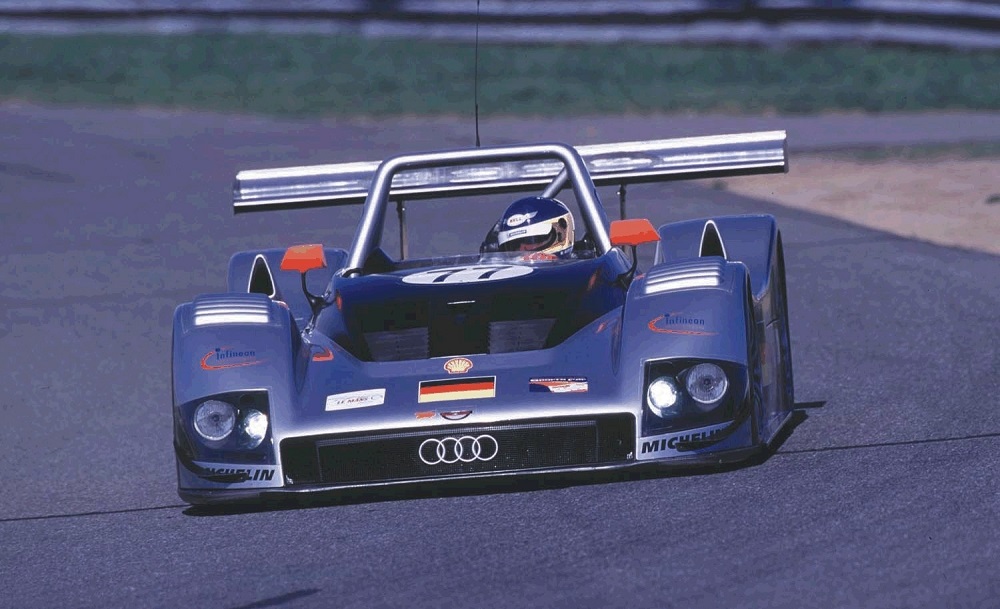The Original R8: History of the Audi R8R and R8C
With the end of the R8 looming nearer, let’s look back at the Le Mans prototypes which lent their namesake: the R8R and R8C!
Cast your mind back to 1995. The McLaren F1 GTR made history for two reasons: It was a GT car that soundly beaten the Courage C34 prototype. And it marked McLaren’s first win – on their first attempt. A feat virtually unheard-of in the race at the time. Consequently, the McLaren set the groundwork for what followed in sportscar racing during the late-90s. The majority of GT cars before were significantly outclassed by their Group C and WSC contemporaries. But 1995 proved a turning point for the competition, setting a new benchmark for speed among LMGT1 cars.
The following year saw yet another groundbreaking achievement: Porsche entering – and winning – 1996’s Le Mans GT1-class with their all-new 911 GT1. The early 911 GT1 shared very little with a road 993 911, being essentially a 962C with a 993 front end. The reason why this was a huge deal was because, at the time, GT1 was a class for heavily-modified road cars. You started off with a road car, then built it for Le Mans. Porsche did the reverse; they built a car specifically for this one race, then “developed” a road car from that. Which means they put compliant exhaust and took off the decals and called it the Straßenversion (Street version). This car proved to be in a league of its own, beating McLaren by 15 laps. It’s within this sphere that Audi decided to throw its hat in the Le Mans ring for the first time.
Reviving a Rich Heritage
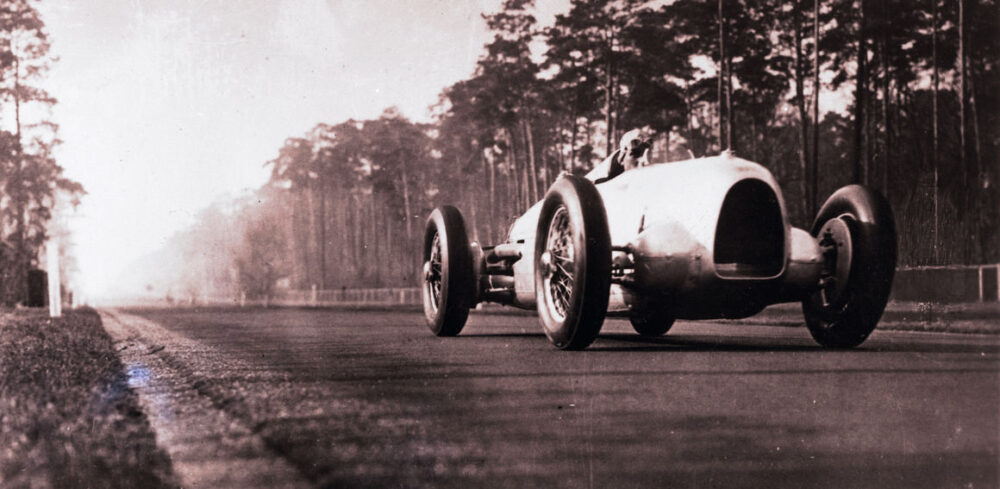
Audi’s racing lineage dates to 1906, with Horsch (the company) winning for the first time in the 1906 Herkomer Run. Although August Horsch himself wasn’t shy about competing. His crowning achievements came when he won the Austrian Alpine Run three years in a row, from 1912 to 1914. The Silver Arrows punctuated the interwar period, solidifying Audi as a top contender in motorsports. However, World War II put a damper on everything, and Audi didn’t re-enter racing officially until 1978.
Fast-forward to 1998. The utter dominance of the GT1 category by vehicles such as the Porsche 911 GT1, Mercedes CLK GTR, and Toyota GT-One changed the landscape of Le Mans so much that manufacturers scrambled to catch up – literally and figuratively. This presented an opportunity for Audi, who decided to enter for the 1999 season. And the car, or rather cars? The original Audi R8’s. No, not the prototype racer from 2000. These R8s were either open or closed cockpit, named R8R and R8C, respectively.
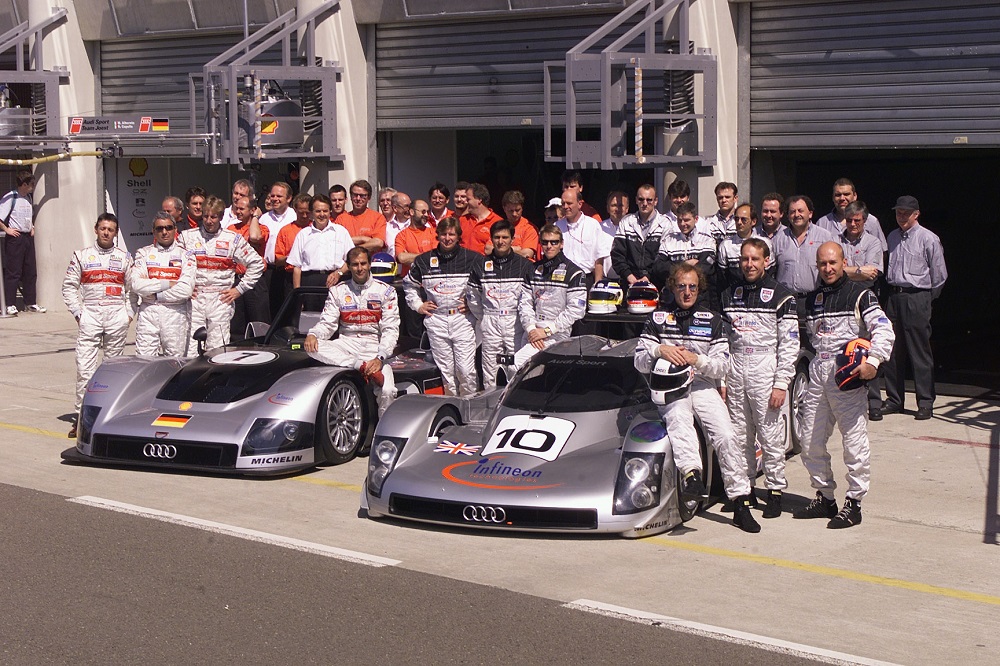
The GT1 class proved so dominant that the ACO altered its guidelines, creating the GTS class in its stead. However, this class proved just as hypercompetitive, with vehicles like the Toyota GT-One and Mercedes CLK-LM having seen years of development time by that point. Instead of putting all their eggs in the then-GT1 basket, Audi decided to split its efforts. They set their sights on two classes, those being GT1 and the class above it, LMGTP. This decision necessitated an open and closed-cockpit division, which led to the split between the R8R and R8C. As such, Audi divided the workload by assigning each project to different firms. Namely, they contracted Dallara to work on the open-cockpit R8R, and Racing Technology Norfolk (RTN) for the R8C.
The Rise and Fall of the R8C
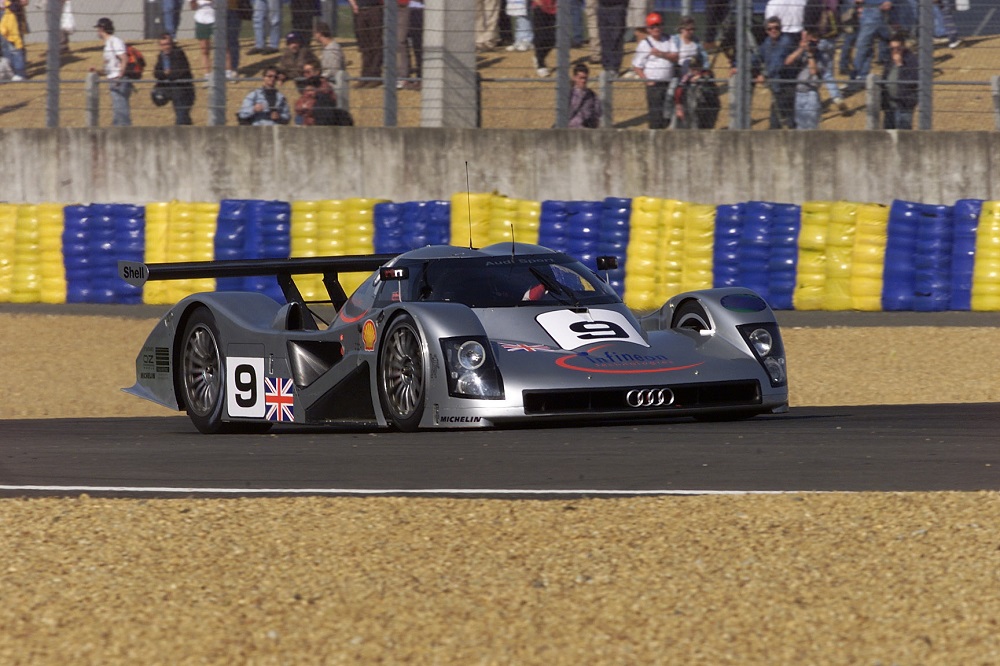
Audi’s original plan relied on the GT1-class running largely unaltered for 1999. For this theoretical race, they contracted RTN to develop a closed-cockpit competitor to the dominant Toyota. Both this car and the R8R shared a common powerplant, Audi’s 3.6L twin-turbo V8. Audi developed the engine in conjunction with Bentley specifically for this platform, producing 600 horsepower for the 1999 season. Alongside this, they took notes from the likes of Porsche and Toyota, incorporating several design elements in the R8C. These include features like the long, sloping cockpit design and open inner front wheel wells to aid in cooling and prevent air buildup. They even took cues from the GT40, placing a pair of “humps” along either side of the roof to achieve the minimum roof height. This left a trough in between that let more air hit the rear wing.
The main problem with the R8C, however, came from the change in regulations. RTN designed the car with a 1999 GT1 debut in mind. And so they were forced to hastily modify its design when the GTS class was introduced. Consequently, the R8C began the season after minimal aerodynamic testing. A similar problem happened with Mercedes, leading to the infamous CLR’s flip down the Mulsanne Straight.
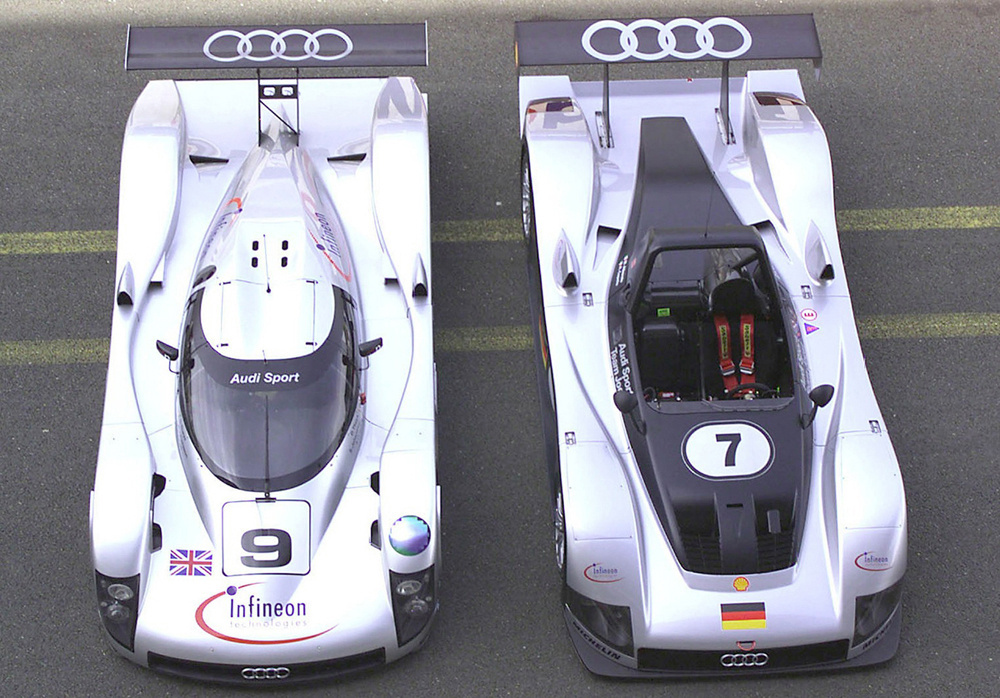
Audi entered two R8Cs in the 1999 Le Mans, the only two that ever ran on their own power. They were incredibly fast down the straights, but suffered heavily in the corners. This led to the R8Cs being seconds off-pace, sending them plummeting down the order. The No. 10 car qualified in 20th, and No. 9 in 23rd. Both cars suffered mechanical problems as well, with gearbox failure ultimately being their downfall. No. 9 DNF’d very early on, in lap 55, followed by No. 10 during lap 198. Audi considered the R8C program a dismal failure, and shelved it with only the two vehicles ever being produced. But they didn’t quit endurance racing altogether. Instead, they focused all their efforts on further developing the R8R.
The Birth of a Racing Legend

Image credit: Nathkon100 under Wikimedia Creative Commons
The R8R began life as Audi’s LMGTP counterpart to the then-GT1 R8C. The idea being that Dallara constructs the R8R under the GTP guidelines, stipulating an open-cockpit design. As it turned out, quite a lot of the car’s design deviates heavily from the R8C because of this co-development period. The original R8R prototype took shape in 1998, featuring a far more hard-edged design than the R8C. This is due to the cars having different designers, with the R8C being designed by British engineer Peter Elleray, and the R8C designed by Michael Pfadenhauer and Wolfgang Appel. Their original R8R design evolved through months of testing, unhindered by the sudden class changes subjected to the R8C. The most major change being the total redesign of the rear end, now sporting the characteristic lowered longtail.
The R8R debuted in the 1999 12 Hours of Sebring, a race which it lost to rivals BMW with their V12 LMR. However, Audi set their sights squarely on Le Mans, considering Sebring to effectively be a trial-by-fire. A trial in which they proved themselves competitive by taking a very respectable third place.
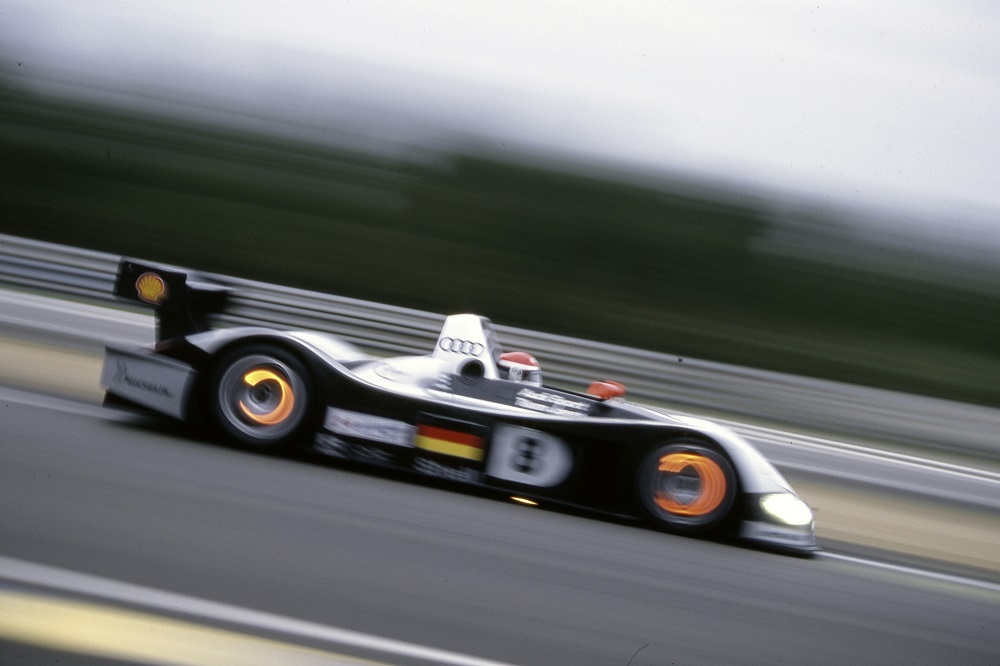
The design further evolved in preparation for Le Mans, incorporating lessons from Sebring into redesigning the front and rear aerodynamics. Most prominently, Dallara further curved the front end, the fenders now bearing a similar profile to the Audi TT. And along the sides, they replaced the NACA ducts with large inlets behind the front wheels, a design motif continued on the R8 prototype. Overall, this greatly benefitted cooling and airflow around the front wheels. Similarly, they shortened the rear wing and added outboard horizontal extensions to the tail to provide additional lower downforce.
The R8R’s Le Mans Debut and Fate
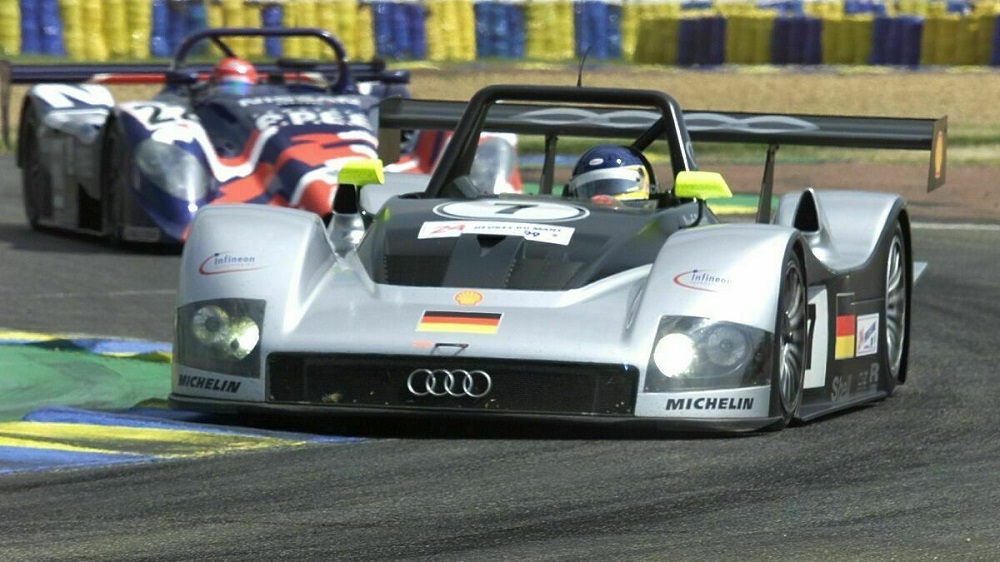
We already know what happened with the R8C, but the R8R competed right alongside. So how did it fare in its class? Well, unlike the R8C, the R8R proved itself admirably, namely from its reliability. They outlasted virtually all of their more well-known competition, taking home a brilliant third and fourth place, second in their class behind BMW. Again, this is bearing with the fact that Audi debuted across two classes in their first season, with only a year’s worth of development time. And even less time for the R8C, which unfortunately dropped. The R8C’s legacy continued, however, its design research partially revived with the Bentley Speed 8.
Meanwhile, the R8R’s development continued in-house for Audi, seeing great potential in the prototype. Only 5 R8Rs saw the light of day, with their final race being 2000’s Silverstone 500. The reason why: Audi used the R8R as a stepping stone towards the R8, which took over all subsequent races.
The R8 prototype needs no introduction to Audi motorsport fans. The car became a household name in racing circles when it won five Le Mans titles. The drivers list reads like a “Best Of” album, featuring names like Tom Kristensen, JJ Lehto, Marco Werner, Allan McNish, and over a dozen others. An existence made possible by its humble and far-lesser known predecessor, the R8R. It entered a total of just four races, for starters. But it left a massive impression for Audi, taking three podium finishes (though no victories).
The Audi R8 Makes Motorsport History
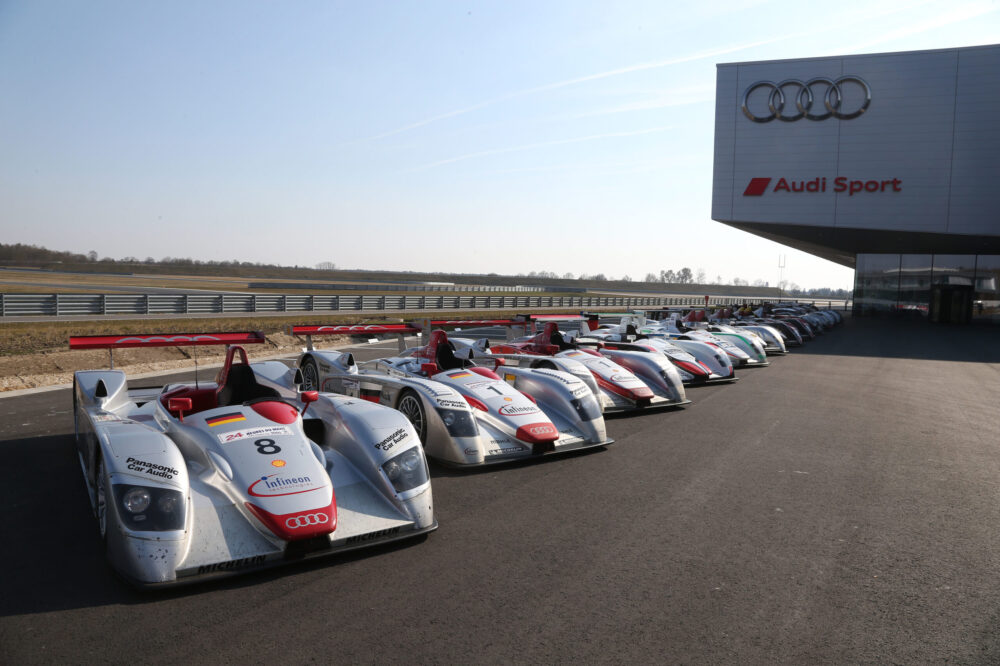
1999 saw a number of manufacturers drop out of Le Mans, including Mercedes, Toyota, and rival BMW. However, BMW continued fielding its V12 LMR in ALMS, headed by Schnitzer Motorsport. In this guise, the R8 directly competed against them a number of times. Competitions which the R8 proved its dominance, convincingly blowing the BMW’s doors off almost every race. Unsurprisingly, Audi R8s topped the field at the 2000 Le Mans, occupying the entire podium.
The 2000 season began an era dominated largely by Audis. With an incredible 13 wins (five of which were with R8s), you could point to any Le Mans race since 2000. And, statistically, you’re more likely to hit a race that Audi won than any other marque. An amazing feat considering Audi debated pulling out entirely following the failure of the R8C project. Most competitors transitioned into F1, including their rival BMW. A rivalry they shared for years, dating back to the 199 DTM season. However, thanks to the success story of the R8R, Audi saw potential in forwarding their prototype sports car racing project. A project which took only a year before it bore fruit.
Racing Images from: Audi MediaCenter

